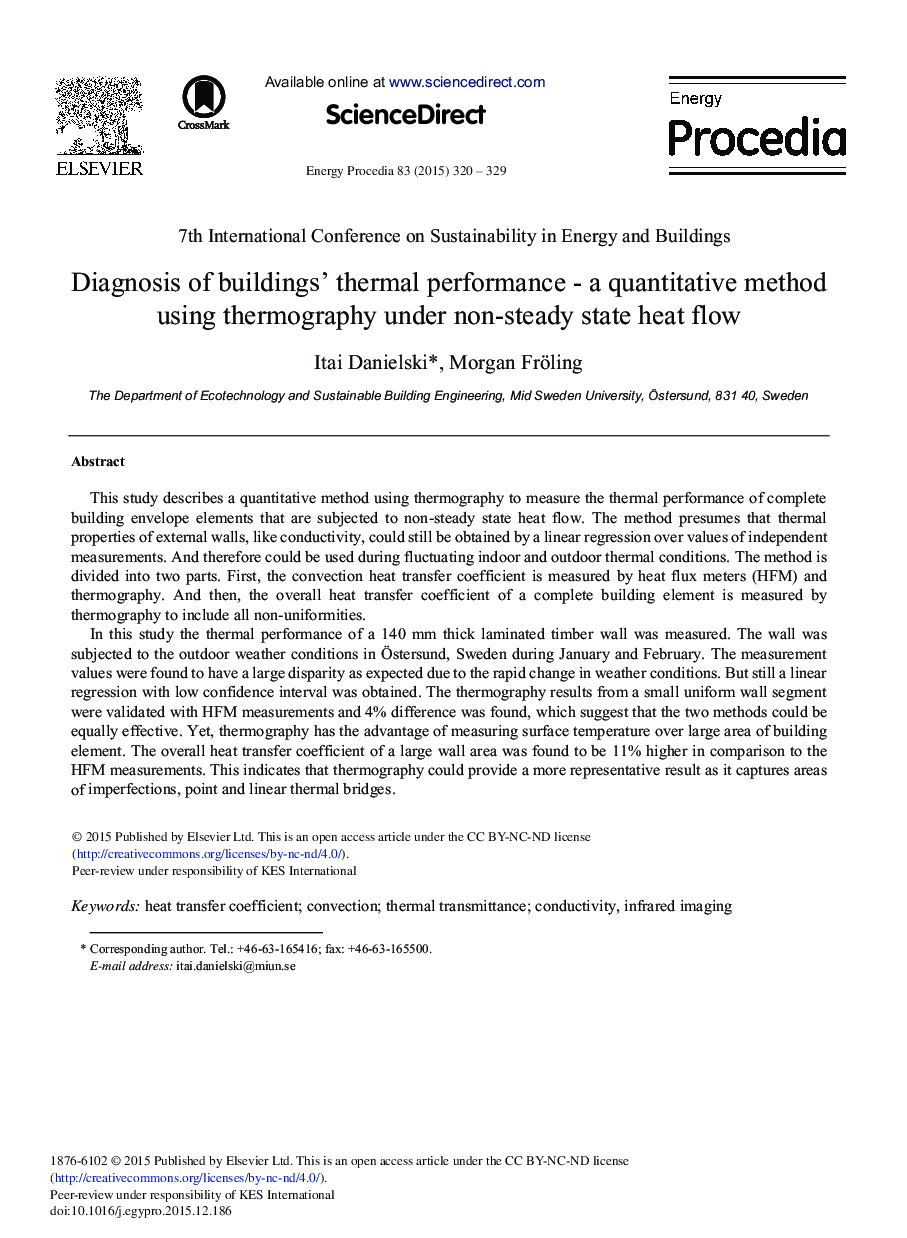| Article ID | Journal | Published Year | Pages | File Type |
|---|---|---|---|---|
| 1509165 | Energy Procedia | 2015 | 10 Pages |
This study describes a quantitative method using thermography to measure the thermal performance of complete building envelope elements that are subjected to non-steady state heat flow. The method presumes that thermal properties of external walls, like conductivity, could still be obtained by a linear regression over values of independent measurements. And therefore could be used during fluctuating indoor and outdoor thermal conditions. The method is divided into two parts. First, the convection heat transfer coefficient is measured by heat flux meters (HFM) and thermography. And then, the overall heat transfer coefficient of a complete building element is measured by thermography to include all non-uniformities.In this study the thermal performance of a 140 mm thick laminated timber wall was measured. The wall was subjected to the outdoor weather conditions in Östersund, Sweden during January and February. The measurement values were found to have a large disparity as expected due to the rapid change in weather conditions. But still a linear regression with low confidence interval was obtained. The thermography results from a small uniform wall segment were validated with HFM measurements and 4% difference was found, which suggest that the two methods could be equally effective. Yet, thermography has the advantage of measuring surface temperature over large area of building element. The overall heat transfer coefficient of a large wall area was found to be 11% higher in comparison to the HFM measurements. This indicates that thermography could provide a more representative result as it captures areas of imperfections, point and linear thermal bridges.
